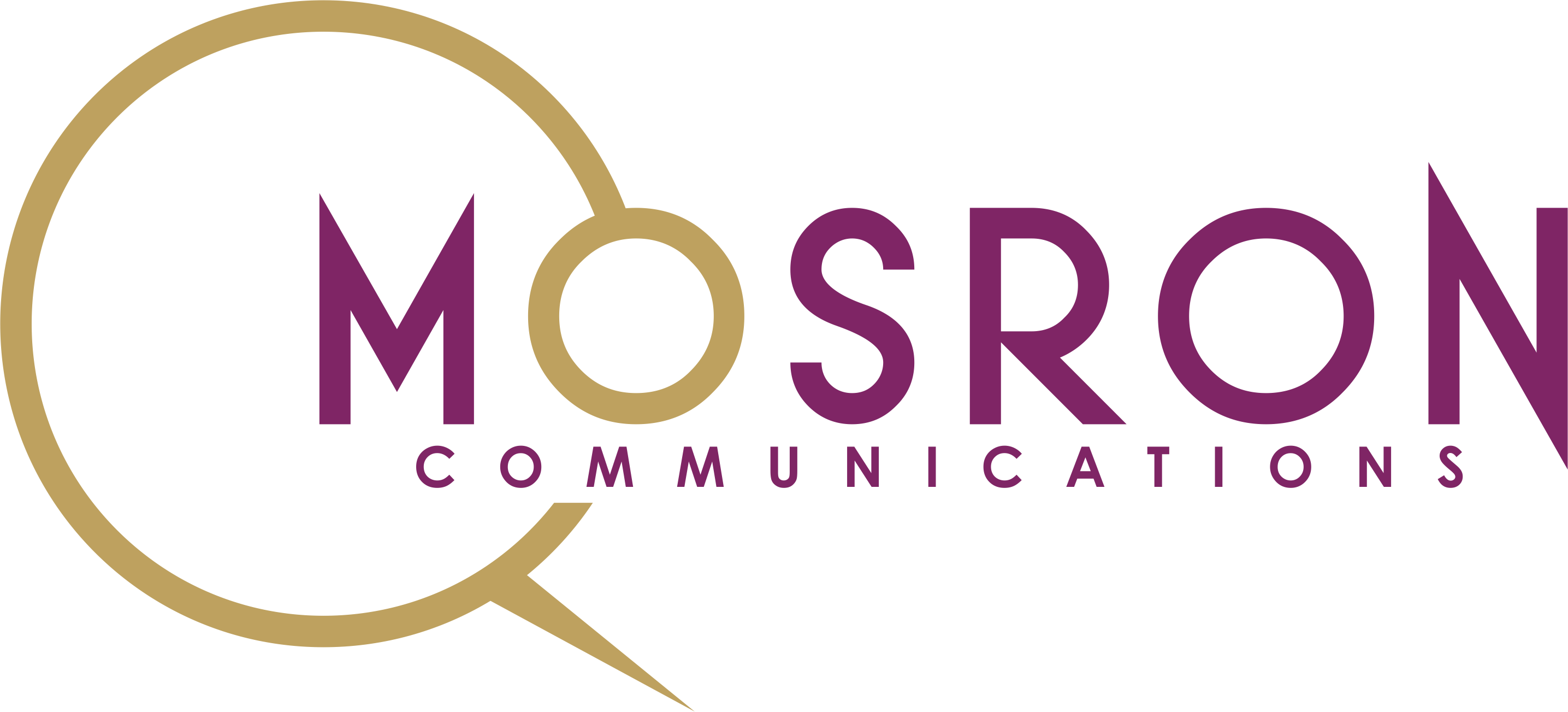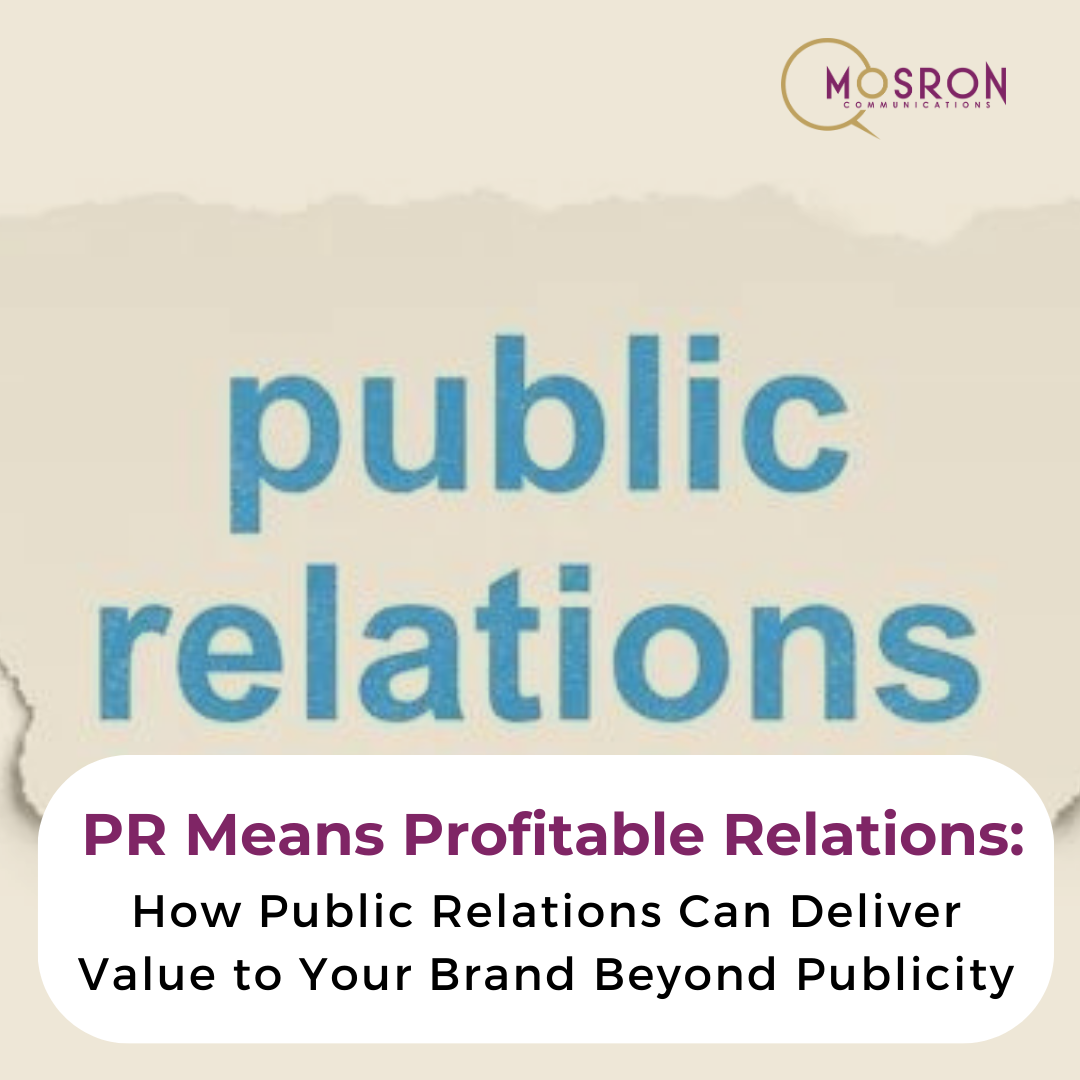“Our PR is not working — we haven’t been getting new publications and event invitations for a while!”
If you have been saying this to your communications team / consultants, and especially if media coverage and external events have been the only parts of your PR strategy till date, it’s time to expand the view. Third-party features and built links are definitely part of strategic PR, but not PR by default. Your PR activities need to hinge upon the cohesive and bespoke PR strategy which, in turn, depends on your business objectives entailing communication ones.
To solidify our points, we like sharing data and cases, especially our Mosron Communications` internal insights. In 2022, we served 16 executive and corporate clients, and for 2/3 of them we delivered services different from media relations and external event management which resulted in meeting business objectives fuller and faster. The sub-services we provided to these clients included quite a range: content plans, employee communication, audits of communication assets, partnership and stakeholder meeting facilitation, to mention a few. To propose and deliver these sub-services, we carefully assessed what a client needed at a given time period — there could be an ongoing crisis, niche product for a narrow audience, invisible CEO / Founder etc. And in those cases, we realised that media coverage and event speaking were not, either only or at all, workable PR solutions.
Sometimes, there is also a particular situation when third-party features tap into an organisation’s business objectives, but the organisation is simply unready to go public, for example the spokespeople are media-shy or need extensive training before talking to media representatives. In this context, it is important to find PR alternatives which will serve the same objectives, yet by different means. For example, if a CEO / Founder has challenges speaking with the media or during public events, they can become part of business networks that would provide a commensurate exposure to the same key stakeholders, but in an off-screen mode of communication.
Here, we have listed 5 PR activities that can deliver value to your brand beyond media and event publicity if your objectives are specific or your organisation is not “media ready”:
- Partnership facilitation. You have an event concept and you have got it all covered, but you are planning to team up with another organisation to optimise resources and double the impact. In this case, you need to make a proper research & selection of potential partners, create a both rational and emotionally appealing proposal / pitch and orchestrate the introduction that will help make the right impression. Definitely a task for your PR team!
- Thought leadership content creation for owned platforms. As they say, the content is the king, and it is not necessary to share it exclusively on third-party platforms to make an impact on the key stakeholders in case they are within reach on the platform. For example, connecting your CEO/Founder with journalists and publishing industry-savvy content on their LinkedIn profiles will create chances for earned media coverage without directly contacting media. If content is quality, insightful and trendy, it will get organic distribution within the industry network.
- Staff meetings. It is aptly said that employees are the backbone and driving force of every organisation. Imagine having an internal disruption within your team and going to the media to soothe them in a public statement where they may not even notice it at best or get more aggravated by the indirect approach at worst. It is the case where media coverage as the go-to PR solution would rather break it than make it right.
- Professional membership. It is a good option for media-shy executives who are willing to bring additional exposure to their company by their own brand, but have a lack of skill / time to speak at industry platforms. By becoming a part of expert communities instead, they will be able to reach the same audience, but in a more comfortable way, for example closed member meetings or chats.
- Courtesy calls. Sometimes the business objective is to attract a certain group of stakeholders, and the communication one is to actually introduce the business to them. In this context, a courtesy call is an optimal way to get noticed and establish the first contact. For example, courtesy calls are relevant for new market entrants that are looking to initiate conversations with regional policy makers and legal officials.
To build your PR strategy only upon strategic activities, there is our workable algorithm:
- Determine the business objectives: there can be securing new industry connections, leads; entering new markets or even increasing content downloads / sales. When possible, add concrete numbers and time periods — it will be easier to track impact metrics then (remember the SMART rule of setting business objectives).
- Determine communication objectives: it can be creating awareness in the new markets, driving interest to a product / service, improving the HR brand or positioning the company / executive as an industry leader. Although communication objectives sometimes may look generic and abstract, it is important to articulate them because they either expand or narrow the overall focus and stakeholder outreach. For example, if creating awareness is currently the key objective, the executives do not need to actively seek industry recognition in their personal capacity. And if you are looking to advance the HR brand of the organisation, the primary stakeholder group will be your employees.
- List key stakeholders based on the determined communication objectives: there can be potential partners, investors or even employees (who will help you get where you are planning to be in terms of the objectives?) — you likely agree that stakeholder groups can be very different, with their own motivations and interests. Once you understand them, it will be much easier to determine channels and messages.
- Choose PR activities that will help reach the projected stakeholders: and finally, you need to understand what sequence of PR initiatives you will deploy to serve both your and a particular stakeholder groups` interest. Your PR strategy needs to be win-win both for your and your stakeholders.
To serve your business and brand`s objectives well, your PR should stand for Profitable, not precisely Public, Relations. But whether it should be public or not, it is up to you to decide.
#MosronCommunications
#PublicRelationsConsultants
#PartnersNotVendors
#B2BCommunications







